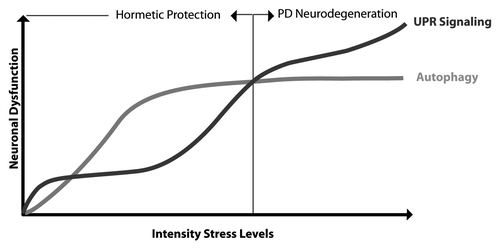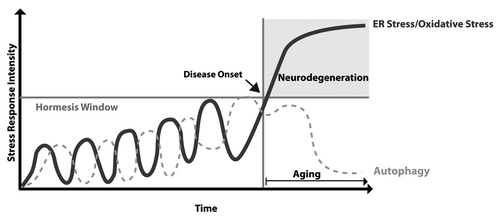Figures & data
Figure 1. Hormesis mechanism to avoid degeneration in PD. During presymptomatic stages of PD, low levels of stress (i.e., oxidative and ER stress) may trigger the activation of autophagy as a survival pathway to reduce stress levels. This preconditioning may effect protect against a subsequent toxic stimuli that prevents or delays degeneration of dopaminergic neurons through a hormesis mechanism. The appearance of the clinical manifestation of PD may be due in part to a gradual increase in stress levels to an irreversible point where hormesis mechanisms (i.e., UPR prosurvival/adaptive signaling and upregulation of autophagy) are not sufficient to recover cellular homeostasis.

Figure 2. The aging and hormesis rehostat in neurodegenerative diseases. During presymptomatic stages of disease, low or fluctuating perturbations of ER function trigger adaptive programs that protect neurons against subsequent stress episodes. When stress levels reach an irreversible point, neurological impairment is expressed. The gradual decrease of autophagy activity and increased oxidative stress during aging ablates the hormetic capacity of the cell, further increasing stress/injury levels in a vicious cycle, culminating in irreversible neuronal dysfunction and possibly neuronal loss.
